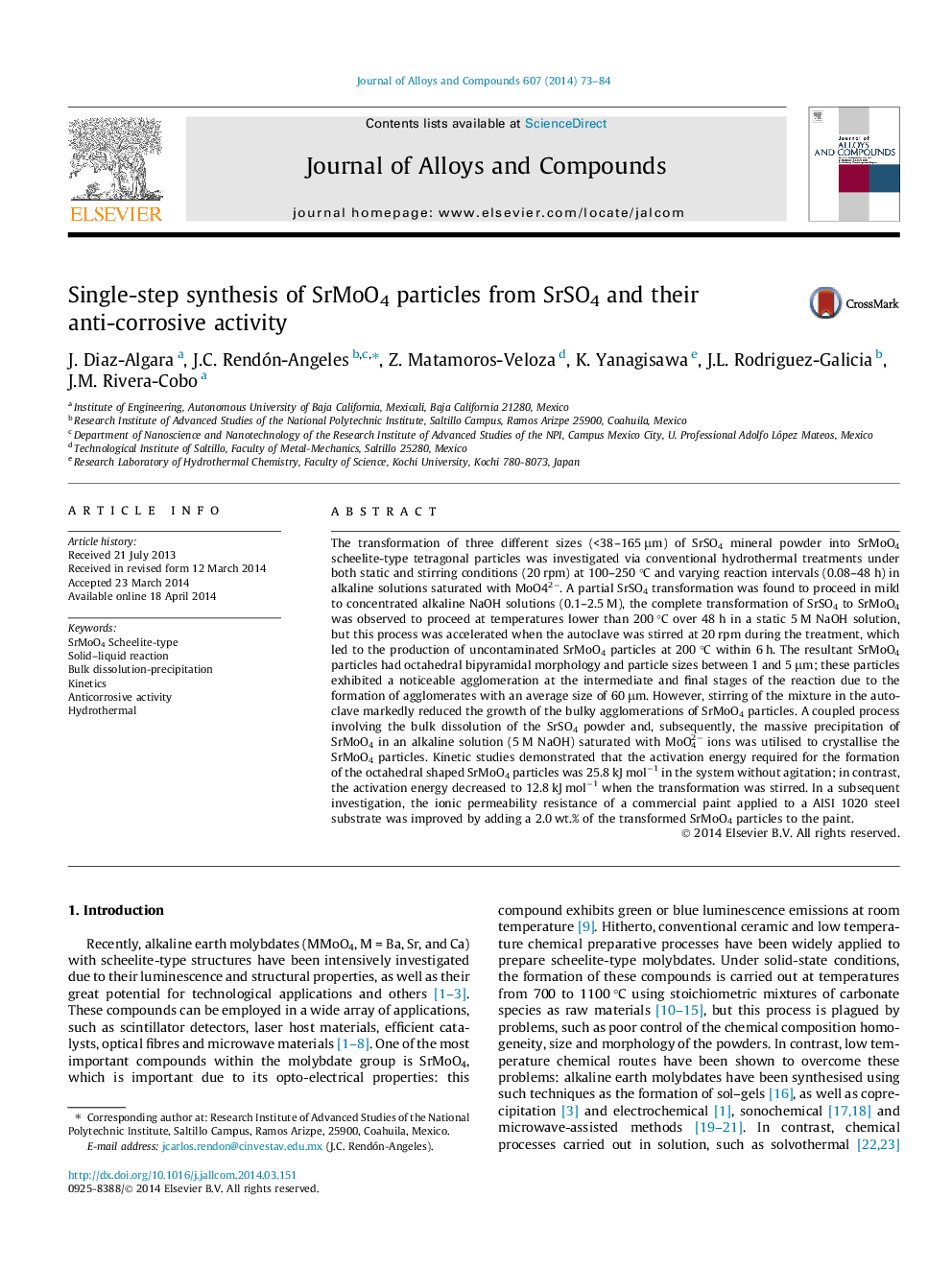| Article ID | Journal | Published Year | Pages | File Type |
|---|---|---|---|---|
| 1610895 | Journal of Alloys and Compounds | 2014 | 12 Pages |
•The conversion of SrSO4 ore into SrMoO4 occurred in alkaline hydrothermal solutions.•Morphology and size control of the transformed SrMoO4 particles occurred by fluid stirring.•A reduction of 11.24 kJ mol−1 on the transformation of SrMoO4 particles occurred at a speed of 20 rpm.•The produced SrMoO4 powders have a potential application as anticorrosive paint agent.•2 wt.% of SrMoO4 powders increased the acrylic paint coatings impedance deposited on 1020 steel.
The transformation of three different sizes (<38–165 μm) of SrSO4 mineral powder into SrMoO4 scheelite-type tetragonal particles was investigated via conventional hydrothermal treatments under both static and stirring conditions (20 rpm) at 100–250 °C and varying reaction intervals (0.08–48 h) in alkaline solutions saturated with MoO42−. A partial SrSO4 transformation was found to proceed in mild to concentrated alkaline NaOH solutions (0.1–2.5 M), the complete transformation of SrSO4 to SrMoO4 was observed to proceed at temperatures lower than 200 °C over 48 h in a static 5 M NaOH solution, but this process was accelerated when the autoclave was stirred at 20 rpm during the treatment, which led to the production of uncontaminated SrMoO4 particles at 200 °C within 6 h. The resultant SrMoO4 particles had octahedral bipyramidal morphology and particle sizes between 1 and 5 μm; these particles exhibited a noticeable agglomeration at the intermediate and final stages of the reaction due to the formation of agglomerates with an average size of 60 μm. However, stirring of the mixture in the autoclave markedly reduced the growth of the bulky agglomerations of SrMoO4 particles. A coupled process involving the bulk dissolution of the SrSO4 powder and, subsequently, the massive precipitation of SrMoO4 in an alkaline solution (5 M NaOH) saturated with MoO42− ions was utilised to crystallise the SrMoO4 particles. Kinetic studies demonstrated that the activation energy required for the formation of the octahedral shaped SrMoO4 particles was 25.8 kJ mol−1 in the system without agitation; in contrast, the activation energy decreased to 12.8 kJ mol−1 when the transformation was stirred. In a subsequent investigation, the ionic permeability resistance of a commercial paint applied to a AISI 1020 steel substrate was improved by adding a 2.0 wt.% of the transformed SrMoO4 particles to the paint.
